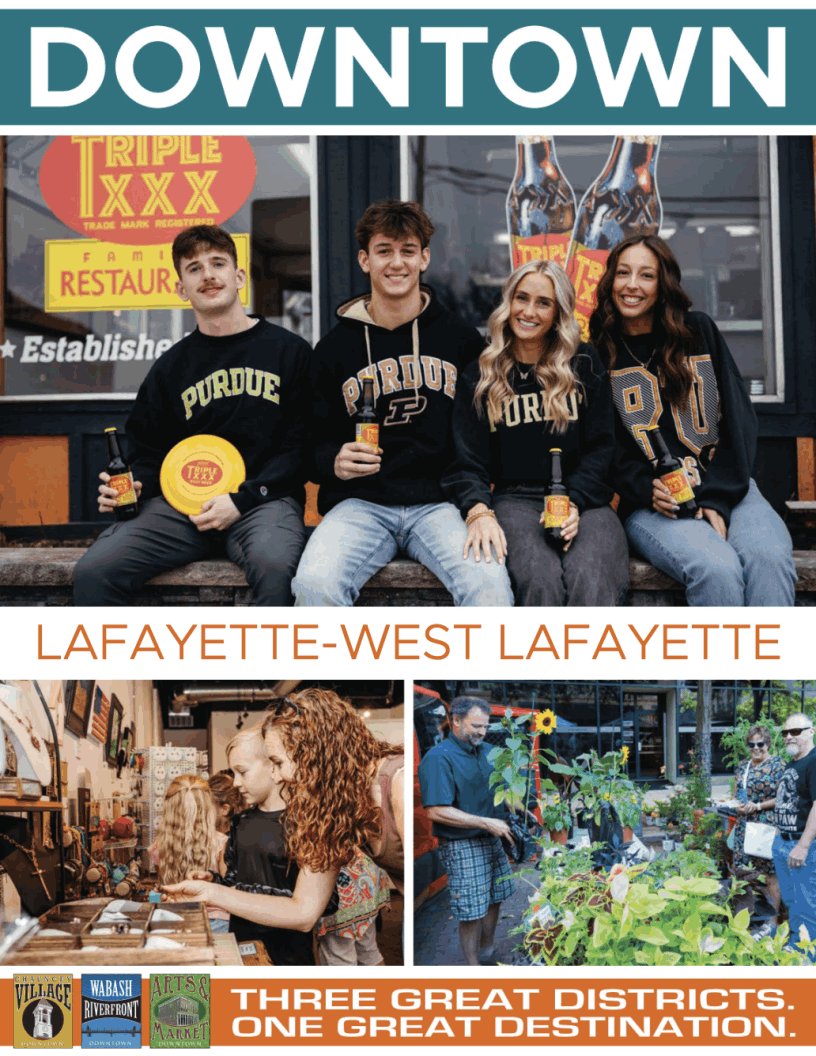Population & Demographics: Understanding Our Diverse Community
A Vibrant and Growing Community
As you settle into professional life in Lafayette, you'll become part of a dynamic metropolitan area that combines small-city accessibility with surprising diversity and growth. The Lafayette-West Lafayette Metropolitan Statistical Area (which includes Tippecanoe, Benton, and Carroll counties) has a population of approximately 224,000 residents, with ongoing steady growth projected to continue in the coming years. Since 2000, the region has gained nearly 39,000 residents, with the vast majority of this growth occurring in Tippecanoe County, underscoring the area's economic vitality and quality of life advantages that continue to attract new residents.
The city of Lafayette itself has a population of around 71,500, making it the 10th largest city in Indiana. When combined with its sister city of West Lafayette across the Wabash River, the urban core forms a vibrant community offering the amenities of a much larger metropolitan area while maintaining a genuine small-city feel where personal connections matter. Unlike practicing in a large metropolitan area where you might feel anonymous, here you'll quickly become a recognized and valued member of the community, building meaningful relationships with patients, colleagues, and neighbors.
- Steady population growth trend with Lafayette MSA projected to reach 222,000 by the end of 2025
- Designated as a Metropolitan Statistical Area with sufficient population to support specialized healthcare services
- Balanced demographics with a median age of 33.7 years, providing both a vibrant community atmosphere and significant healthcare needs
- Strong influx of international residents creating cultural diversity unusual for a Midwestern city of its size
Diverse Demographics and Cultural Richness
Lafayette's demographic makeup reflects both its Midwestern heritage and its evolution into a global community influenced by Purdue University and international businesses. The city proper has a population that is approximately 76% White, 9% Black/African American, 14% Hispanic/Latino, with smaller percentages of Asian, Native American, Pacific Islander, and multiracial residents. This diversity is especially notable compared to many similar-sized Midwestern communities and creates a culturally rich environment with a variety of perspectives, cuisines, and traditions.
The presence of Purdue University significantly impacts the area's demographics, bringing students, faculty, and researchers from across the nation and around the world. This creates an unusually cosmopolitan atmosphere for a city of Lafayette's size, with over 130 countries represented in the greater Lafayette area. As a physician, you'll have the opportunity to work with patients from diverse backgrounds, providing culturally sensitive care while expanding your own global perspective.
- Multicultural community with residents from more than 130 countries, creating opportunities to connect with people from diverse backgrounds
- Annual Global Fest celebration featuring cultural entertainment, food, and art from Africa, the Americas, Europe, Asia, and the Middle East
- Diverse patient population providing enriching professional experiences and opportunities to practice culturally competent healthcare
- Vibrant cultural scene with international restaurants, festivals, and community organizations
Economic Landscape and Professional Opportunities
The Lafayette area maintains a resilient economy with diverse sectors including manufacturing, healthcare, education, technology, and agriculture. Major employers like Purdue University, Subaru of Indiana Automotive, Caterpillar, and Franciscan Health provide stability, while the entrepreneurial ecosystem fostered by the Purdue Research Park and Discovery Park District drives innovation and growth. This economic diversity has helped the region maintain a lower unemployment rate (3.6%) than both Indiana and national averages.
For your spouse or partner, the varied employment landscape offers professional opportunities across multiple sectors. The median household income in Lafayette is approximately $53,000, which, when combined with the very reasonable cost of living, creates substantial purchasing power. Your physician's income of $525,000+ will place you well within the highest earning bracket in the community, affording exceptional lifestyle advantages and financial security compared to similar positions in high-cost metropolitan areas.
- Diverse employment sectors including education, healthcare, manufacturing, technology, and agriculture
- Lower unemployment rate (3.6%) than state and national averages
- Purdue University and Purdue Research Park creating opportunities for highly educated professionals
- Significant international companies providing career paths for trailing spouses with specialized skills
Community Character and Social Connections
As you build your practice in Lafayette, you'll quickly discover the community's distinctive character — a blend of Midwestern warmth, intellectual curiosity, and progressive thinking. Residents take pride in their community's balance of traditional values and forward-looking innovation. This creates an environment where physicians and their families can quickly establish meaningful connections and find their place within the social fabric.
Unlike the often anonymous experience of practicing in larger metropolitan areas, Lafayette offers the opportunity to become a recognized and respected community figure. You'll encounter patients at community events, serve alongside colleagues on civic committees, and find your children's teachers and coaches among your patients. This interconnectedness creates both professional satisfaction and personal fulfillment as you become truly integrated into the life of the community.
- Strong tradition of community involvement and volunteerism
- Active civic organizations including Rotary, Kiwanis, and numerous professional associations
- Engaged community leadership with opportunities for physician participation
- Regular community events that foster connections across diverse groups
In Lafayette, you'll find the perfect population balance — large enough to support specialized medical practice and diverse cultural opportunities, yet small enough to foster meaningful connections and community recognition. This combination creates an ideal environment for physicians seeking professional fulfillment, community engagement, and personal growth.
